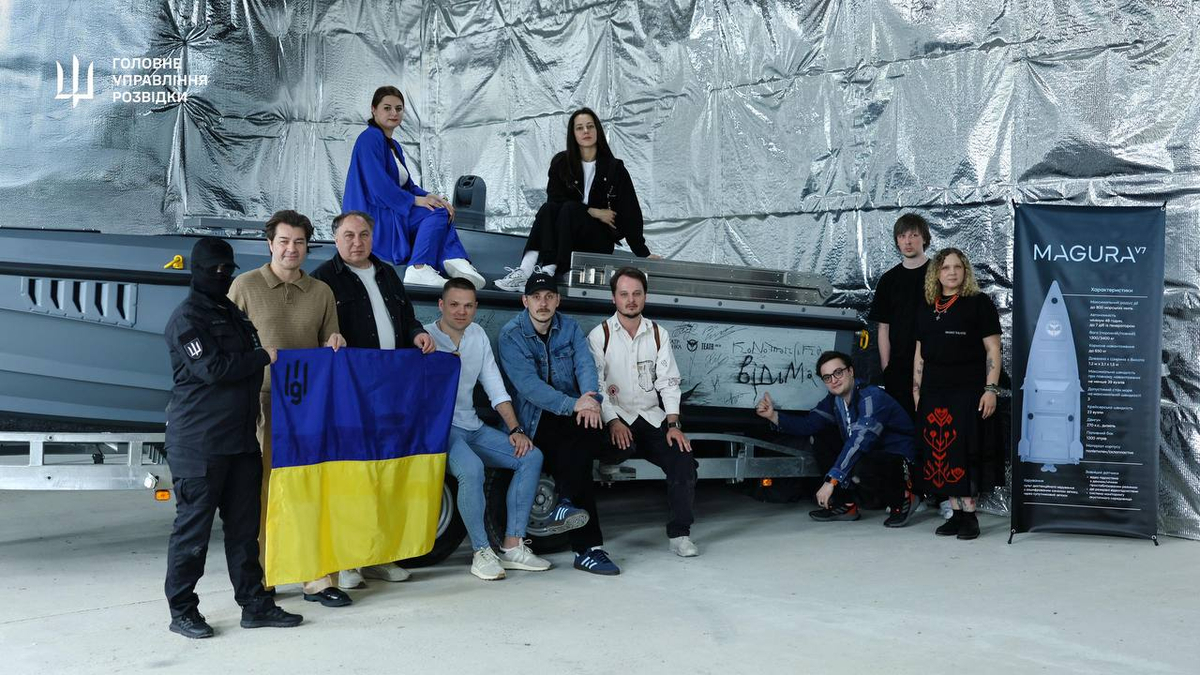By Steve Brown
During a press conference on Wednesday, July 2, the head of Ukraine’s Defense Intelligence Directorate (HUR), Kyrylo Budanov, was dismissive of Russian attempts to replicate the successes of his country’s unmanned surface vessel (USV) sea drones.
Despite unveiling a range of USV, including the BEK-1000, Orkan, and Vizir, at Russia’s “FLOT-204” naval defense exhibition and elsewhere, they had yet to register any effective operational use.
“The last time they tried to use their experimental models was in early June – they did not show results,” Budanov said, “They [the USV] detonated without even reaching our territorial waters. According to our information, they were heading for the city of Yuzhne and were looking for targets there.”
The Ukrainian military issues website Militarniy reported in May that, following numerous successful attacks by Ukrainian USVs against vessels in the Black Sea, Moscow had ordered the creation of separate dedicated units to support the Russian fleet using first-person view (FPV) and autonomous air, land, surface and underwater drones.
Russian propaganda outlets say that up to five regimental-sized units will be formed to carry out reconnaissance, strike and defense functions including the detection and neutralization of sea mines – three deployed in the European theater and two more in support of its Pacific Fleet.
A report in the Ukrainian Shipping Magazine earlier in the year said Russian engineers were trying to reproduce the technology recovered from captured Ukrainian Magura V5 USV.
Ukrainian sea drone development never stops
Meanwhile, Ukraine continues to press on with technological and operational developments in its use of sea drones. In May, HUR’s dedicated drone unit “Group 13” revealed that its sea drones carrying a range of weaponry, including repurposed air-to-air missiles, had destroyed around 17 Russian naval vessels, helicopters, and aircraft.
HUR’s press service reported on June 13 that Group 13 had taken delivery of the latest Magura 7 sea drone, given the symbolic name “Konotop Witch.” The USV had been purchased at a cost of Hr.8 million ($193,000)using funds raised by Ukraine’s Ivan Franko National Academic Drama Theater, Teatr.org.ua, the Diana Podolyanchuk Charitable Foundation, and HUR.
“We are grateful to everyone who joined this cause. Soon our “Konotop Witch” will terrify Russian sailors and pilots,” the Group 13 spokesperson with the call sign “Xena” said.
On June 23 Norway announced via X that it was allocating NOK 6.7 billion ($665 million) to support the UK/Norwegian-led maritime coalition in 2025. Its Minister of Defense, Tore Sandvik, said: “Part of this funding will be used to develop and produce uncrewed maritime vessels using KDA [Norway’s Kongsberg Defence & Aerospace Company] technology, with production based in Ukraine.”
